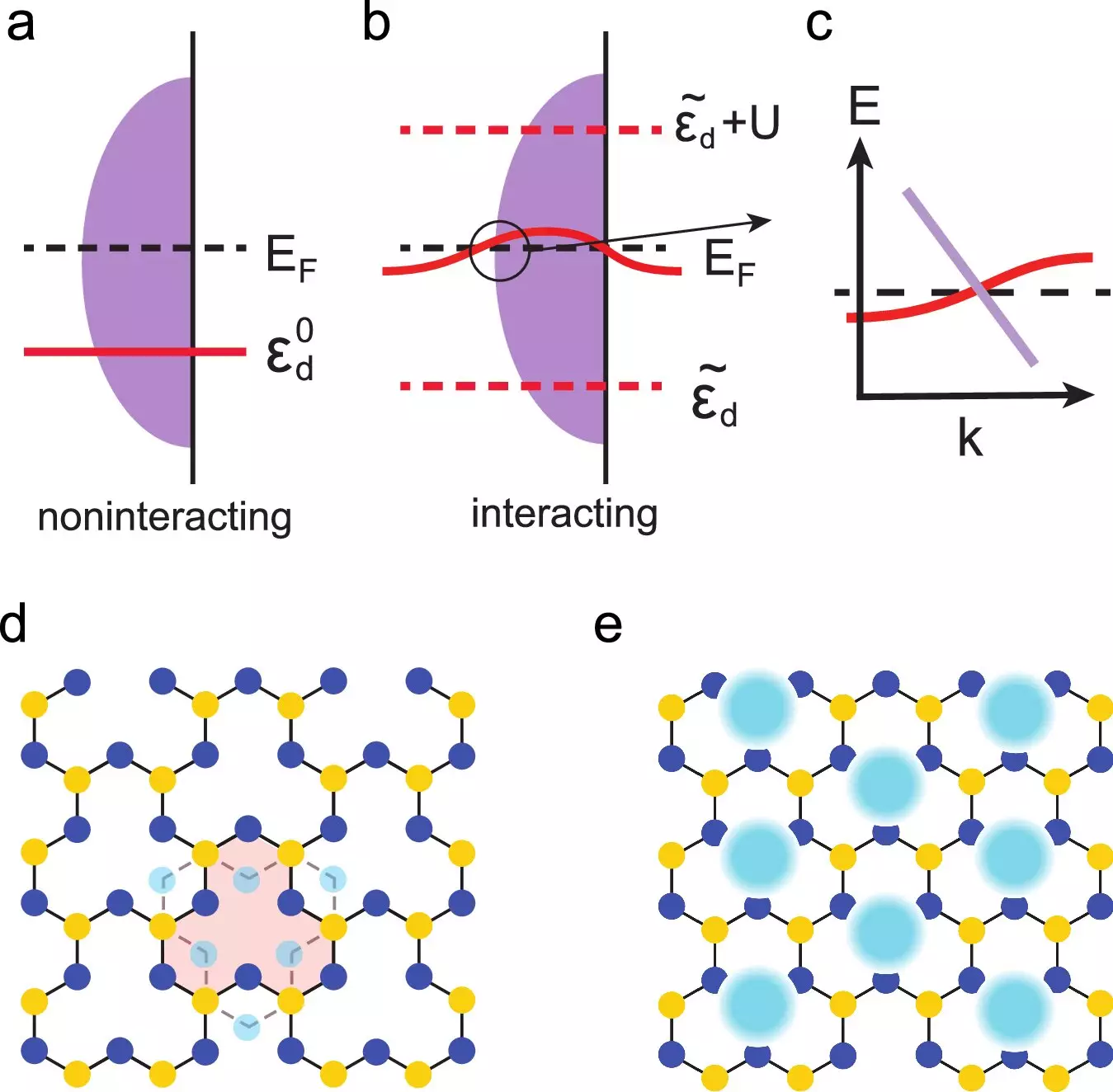In a groundbreaking study published in Nature Communications, a team of scientists from Rice University have uncovered the potential for flat electronic bands at the Fermi level to revolutionize the field of quantum computing and electronic devices. Led by Qimiao Si, the team’s findings shed light on the unique properties of quantum materials governed by the laws of quantum mechanics.
Traditionally, flat bands have been located far from the Fermi energy, limiting their impact on a material’s properties. However, Si’s team discovered that electron interactions can give rise to new flat bands at the Fermi level, greatly enhancing their importance. These flat electronic bands have the potential to enhance electron interactions, leading to the creation of new quantum phases and unusual low-energy behaviors.
Using a theoretical model, the researchers demonstrated that electron interactions can create a new type of Kondo effect, where immobile particles gain mobility by interacting with mobile electrons at the Fermi energy. This breakthrough allows for significant progress in the field of quantum materials, potentially paving the way for the development of new quantum bits, qubits, and spintronics.
The team’s research suggests novel ways to design transition metal ions known as d-electron materials with specific crystal lattices. These materials, when equipped with flat electronic bands, could lead to advancements in quantum computing and electronic devices. The results indicate that the flat bands could give rise to strongly correlated topological semimetals at relatively low temperatures, hinting at the possibility of operating at high temperatures or even room temperature.
The study highlights the potential for flat bands to enable the realization of new quantum states of matter, including anyons and Weyl fermions. Anyons, promising agents for qubits, and Weyl fermions, with applications in spin-based electronics, could open up new avenues for advanced quantum control and responsiveness to external signals. These materials have the capacity to operate beyond the constraints of low temperatures, showcasing the tremendous potential for innovative quantum materials designed and controlled in strongly interacting settings.
The research conducted by Rice University’s team, alongside their collaborators, has expanded our understanding of flat electronic bands and their implications for the future of quantum materials. By harnessing the unique properties of these bands at the Fermi level, researchers aim to unlock new possibilities in quantum computing, electronic devices, and beyond. This groundbreaking work sets the stage for a new era of exploration and discovery in the realm of quantum materials and their applications in cutting-edge technologies.


Leave a Reply